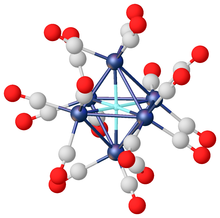Hydrides are the compounds of hydrogen with less electronegative elements. Hydrogen reacts with many elements and forms the hydrides; however, it does not react with the noble gases. Hydride is anion of the hydrogen.
Types of Hydrides
Depending on the type of chemical bonding, hydrides are divided into categories such as ionic hydrides, covalent hydrides, and interstitial hydrides.

Ionic Hydrides
Ions hydrides are produced by the reaction of hydrogen with the highly electropositive s-block elements (Alkaline Erath Metals and Alkali Metals). In conventional solvents, ionic hydrides are not soluble and this phenomenon reflects their non-molecular nature. Mostly the ionic hydrides are existing as binary materials mean that they involve the two elements and one of these elements is hydrogen. Often, they are used as reducing agents and heterogeneous bases in the organic synthesis.
In the solid state, ionic hydrides are non-conducting, crystalline and non-volatile. However, when the ionic hydrides are in the liquid state, they do conduct electricity. On electrolysis, ionic hydrides liberate the hydrogen gas at the anode. The examples of ionic hydrides are KH, NaH, CaH2, etc. All of these contain the H– ion.
Covalent Hydrides
Covalent hydrides are formed by the hydrogen and other similar electronegative elements like carbon and silicon etc. Covalent hydrides are hard in nature. The most common examples of covalent hydrides are NH3 and CH4. The compounds formed by the interaction of hydrogen with the non-metals are also called hydrides. These are volatile compounds and are covalent hydrides. Usually, covalent hydrides are gases or liquids as their boiling and melting points are low.
The hydrides in this category exist as discrete molecules oligomers, polymers, or the hydrogen that has been chem adsorbed to the surface. Complex metal hydride is an important example of covalent hydride. It is powerful reducing and soluble hydride which has wide uses in the organic synthesis. For example, sodium borohydride is good for this purpose. The hydrides of transition metals include the compounds that have been classified as the covalent hydrides.
Interstitial Hydrides
Interstitial hydrides are formed by the interaction of hydrogen with d-block and f-block elements. The metals of the groups of 7, 8, and 9 in the periodic table do not form the hydrides. These hydrides conduct the electricity and the heat but the extent is lesser than that of the parent metals. There is a metallic bond in the interstitial hydrides. These are non-stoichiometric compounds which means that it can present the number of atoms of the elements by the ratio of small whole numbers. In interstitial hydrides the amount of hydrogen in the lattice is variable.Most commonly interstitial hydrides exist with alloys and metals. Generally, their bonding is considered as metallic. Their composition varies with changing pressure and temperature. Palladium is one of the most common examples of the interstitial hydrides which is widely being considered as an important means to carry the hydrogen for the fuel cells.
In general, all the hydrides have many important applications in daily life and are widely used in today’s technology.